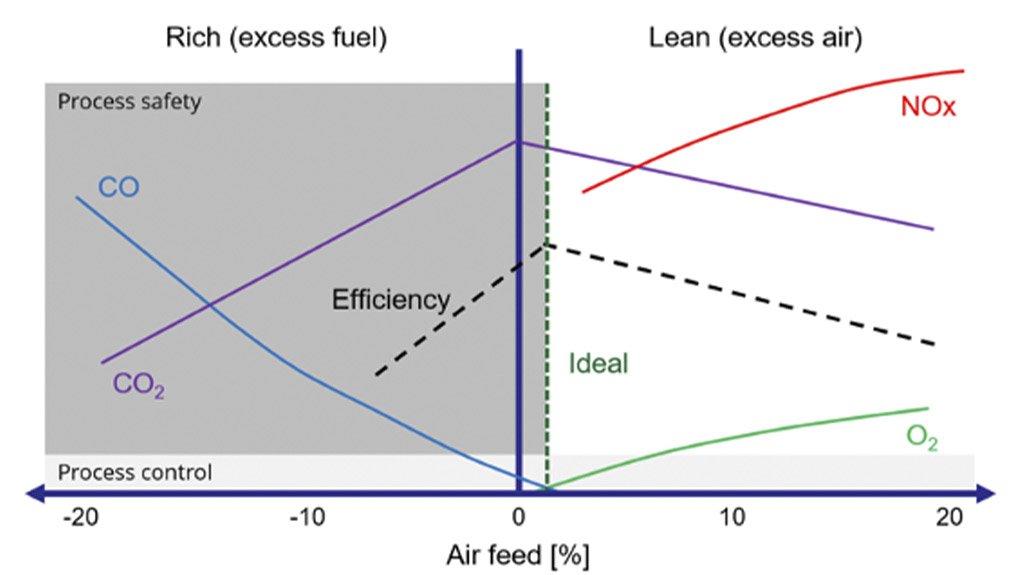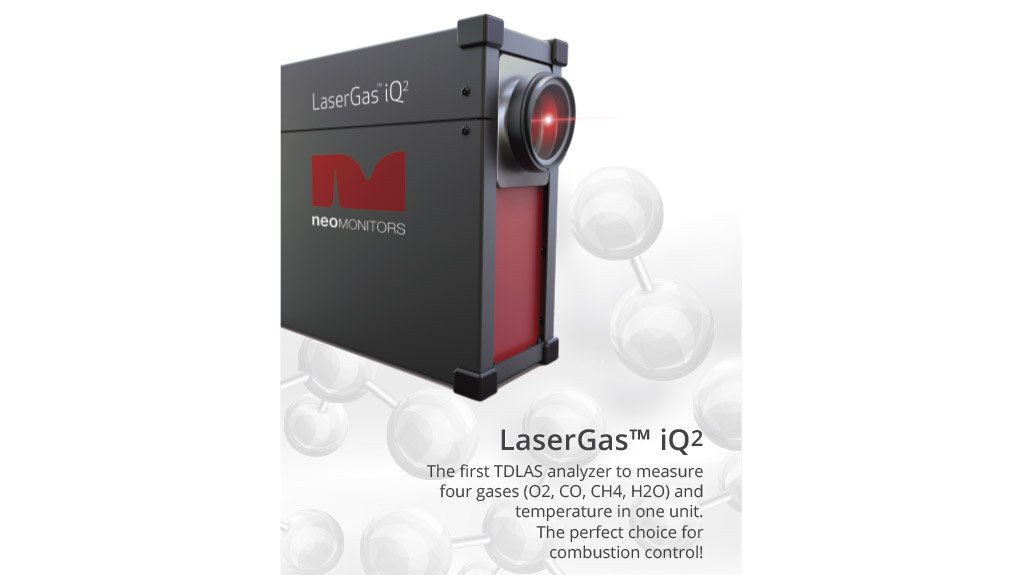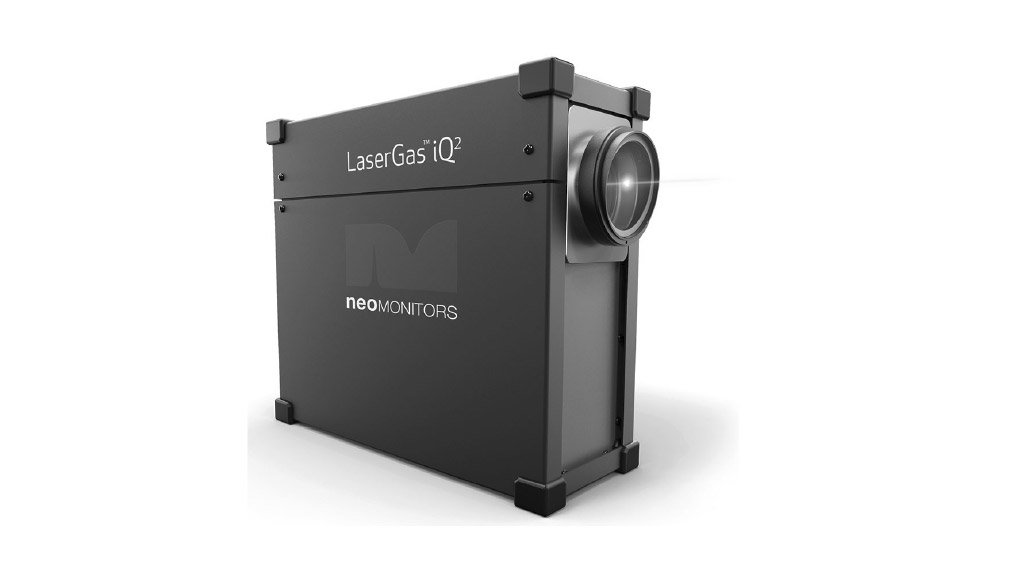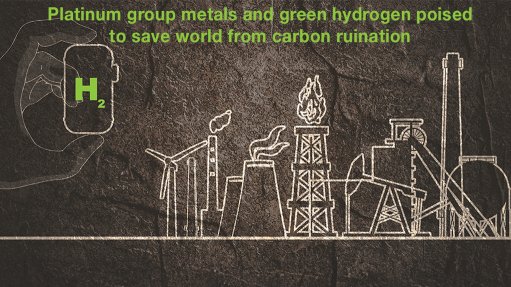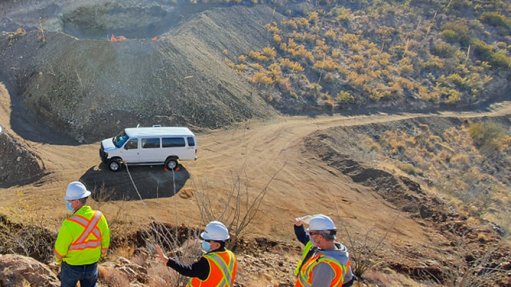Sustainability through Optimisation
This article has been supplied as a media statement and is not written by Creamer Media. It may be available only for a limited time on this website.
Sustainability involves more than monitoring and reporting emissions. Understanding and controlling the entire process chain is crucial for prolonged maintenance and support.
Through optimisation, we can directly increase product quality and profit margin, however, an often overlooked, secondary effect is the reduction in pollutant generation.
Considering combustion, one of the most important industrial processes providing heat and power for operation, the primary goals of plant operators are fuel efficiency and safe operation. Optimising this process not only increases these factors, but the generation of pollutants such as COx and NOx is greatly reduced.
Gas analysers based on Tunable Diode Laser Absorption Spectroscopy (TDLAS) have been used for many industrial process control and emission monitoring applications, however, the use of TDLAS for combustion analysis has always been a challenge.
Balancing operator goals requires Carbon Monoxide (CO) measurements to be made across a high dynamic range. PPM readings need to be measured with high sensitivity for clean combustion while safe operation relies on accurately monitored percentage CO levels.
To better understand this challenge, we elaborate on the TDLAS technology. Gas concentration is determined by scanning a laser with a known wavelength across a spectral region where the gas to be measured absorbs light. The laser is directed across the column of gas, towards a photodetector, where the light emitted from the laser is processed and monitored.
The gas concentration is calculated by function of absorbed light and known process parameters such as optical path length, temperature and pressure. With the gas light absorption proportional to the concentration, less light received by the photodetector translates to a higher concentration of the target gas.
Considering the aforementioned spectral region, all gases have absorption lines at different wavelengths. When implementing TDLAS, it is crucial to select an absorption line that is not shared by gases that may be present in the process stream. When scanning for CO there are several available absorption regions to select from, however, each has its own limiting characteristics. Geiser et al (2019)1 write: ”While the band around 1,5 μm is too weak to achieve the desired sensitivity, the band around 4,6 μm is too strong, and thus limits the upper boundary of the measurement range. This leaves the 2,3 μm band, where not only methane (CH4) has strong absorption bands, but also some water vapour (H2O) absorption lines are very strong at high temperatures.”
To combat this challenge, NEO Monitors has developed a single combustion analyser, combining a new signal processing technique with two lasers in a single compact unit. A single laser is responsible for measuring O2 and temperature with the additional laser measuring the remaining process stream constituents CH4, CO and CO2. Additionally, the ability to monitor CO levels allows the inherent benefits of general TDLAS to be fully utilised across burner applications.
The in-situ cross stack measurement, when compared to extractive sampling, is superior for accurately representing the entire combustion zone, while fast response times are essential for detecting rapid concentration changes in the highly dynamic combustion process. In comparison to alternative technologies, TDLAS technology can continue to measure target gases without the presence of other gases, providing critical feedback on safe/unsafe operation, while ensuring optimum air-fuel ratio control.
NEO Monitors’ LaserGas iQ provides cost-effective and reliable fine control of the entire combustion process, contributing to a reduction in unwanted emissions, and most importantly, a safer environment capable of operating well into the future.
Comments
Press Office
Announcements
What's On
Subscribe to improve your user experience...
Option 1 (equivalent of R125 a month):
Receive a weekly copy of Creamer Media's Engineering News & Mining Weekly magazine
(print copy for those in South Africa and e-magazine for those outside of South Africa)
Receive daily email newsletters
Access to full search results
Access archive of magazine back copies
Access to Projects in Progress
Access to ONE Research Report of your choice in PDF format
Option 2 (equivalent of R375 a month):
All benefits from Option 1
PLUS
Access to Creamer Media's Research Channel Africa for ALL Research Reports, in PDF format, on various industrial and mining sectors
including Electricity; Water; Energy Transition; Hydrogen; Roads, Rail and Ports; Coal; Gold; Platinum; Battery Metals; etc.
Already a subscriber?
Forgotten your password?
Receive weekly copy of Creamer Media's Engineering News & Mining Weekly magazine (print copy for those in South Africa and e-magazine for those outside of South Africa)
➕
Recieve daily email newsletters
➕
Access to full search results
➕
Access archive of magazine back copies
➕
Access to Projects in Progress
➕
Access to ONE Research Report of your choice in PDF format
RESEARCH CHANNEL AFRICA
R4500 (equivalent of R375 a month)
SUBSCRIBEAll benefits from Option 1
➕
Access to Creamer Media's Research Channel Africa for ALL Research Reports on various industrial and mining sectors, in PDF format, including on:
Electricity
➕
Water
➕
Energy Transition
➕
Hydrogen
➕
Roads, Rail and Ports
➕
Coal
➕
Gold
➕
Platinum
➕
Battery Metals
➕
etc.
Receive all benefits from Option 1 or Option 2 delivered to numerous people at your company
➕
Multiple User names and Passwords for simultaneous log-ins
➕
Intranet integration access to all in your organisation



